Real time marketing (RTM) is hugely effective when done well… but can be embarrassing and ridiculous when done badly. The beauty of online marketing is that you can quickly reach large number of people with your message, but that’s a double-edged sword when it comes to RTM blunders going viral for all the wrong reasons. Let’s look at some of the best and worst examples of real time marketing and see what lessons can be learned.
Real time marketing is hugely effective when done well, but can be embarrassing when done badly Click To Tweet1. Stay relevant
The best RTM campaign and responses stay relevant to their marketing strategy, to their audience, and to their products. In July, there were plenty of desperate attempts to cash in on the Royal Baby fever sweeping the globe, but this image from bakers Warburton’s stood out as one of the best to capture the mood – and yet stay relevant to the company’s products and sense of Britishness.

Some brands looked like they were trying just a bit too hard to find opportunities to promote their products. Audi’s attempt to make the Emmys ‘House of Cards’ feature fit with their marketing, for example, comes across as awkward.

Lesson: The best idea is to only use events that resonate for you as a brand – if it doesn’t tie into your marketing strategy or fit neatly in with your products, then leave it be.
2. Strike the right tone
The Red Cross discussed disaster preparedness live on Twitter as made-for TV movie ‘Sharknado’ aired on television, using the hypothetical “highly grotesque and terrifying situation of having a tornado full of sharks bearing down on our hometown. How would we prepare? What is our evacuation plan? First aid skills?” Using the hashtags #Sharknado and #RedCross, the Red Cross encouraged people to think about what they would need to do in the event of a disaster, resulting in an informative and engaging Twitter session that made good use of a live event.
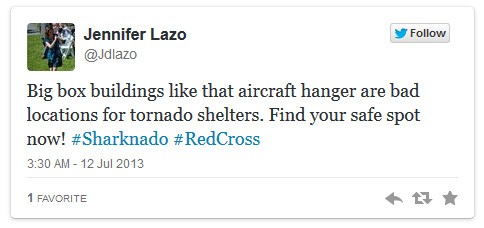
The Red Cross is well qualified to discuss disasters, even hypothetical ones involving shark-bearing freak hurricanes. However, fashion outlet Celebboutique proved they were not so adept at handling tragic news stories with sensitivity when they jumped on the trending hashtag #Aurora to promote their new dress, apparently unaware of the US Aurora massacre.
The best RTM campaigns stay relevant to their marketing strategy, their audience, and their brand Click To Tweet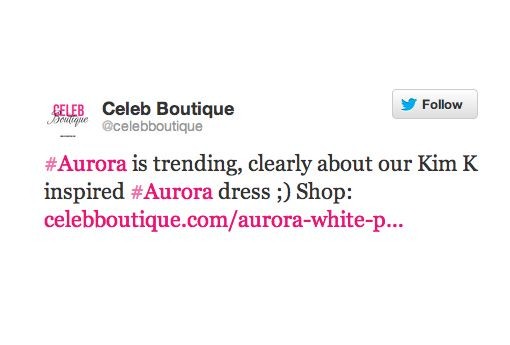
Lesson: When you are tying your product or service to a current event, make sure it is entirely appropriate and strike the right tone, and always do your research.
3. Enhance customer service
Being able to respond to unhappy customers in real time can turn PR disasters into positive word of mouth for your company. Jet Blue recently demonstrated why they have such a good online reputation for dealing with complaints with this timely response to some online grumpiness.
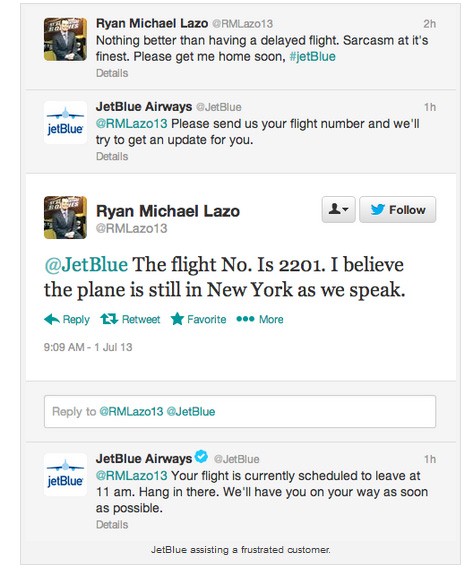
Conversely, arguing with customers in public can backfire horribly, as this now-infamous example from a Cambridge, Mass.-based pizzeria shows. The tweet went viral – and Emma’s Pizza’s response helped to make a bad situation worse: “@Thoughtfuleats She made a scene in my store when she was told how much something that is not on the menu cost. Called like seen + MYOB.”

Lesson: Be mindful of your customer service quality at all times and respond appropriately – social media can be a very public place.
4. Add value
Good RTM content adds value, whether it is just pure entertainment, or delivering something that customers want at the time they want it. Viewers of the Emmys awards ceremony are interested in what people are wearing, and how they can get that look. On seeing the buzz around Tina Fey’s dress,Target quickly showed how customers could get a similar look from their own range – and that’s exactly what Target fans wanted at that moment.
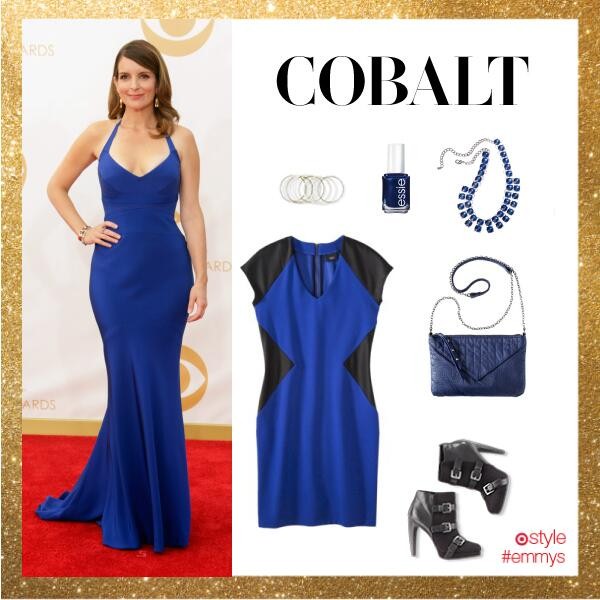
During the same event, Glade’s attempt to capture the essence of the evening fell flat and raised the question why anyone would feel moved to retweet their image? (Only two people did).
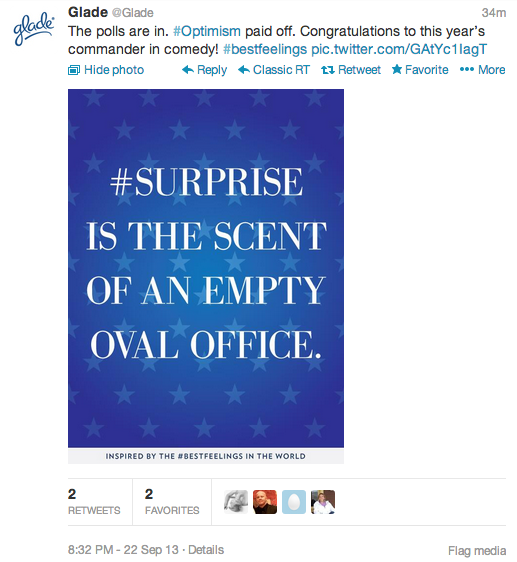
Lesson: Think of your audience when you are crafting RTM response or visuals – what are they getting out of your message and what would be their reason for retweeting it?
Real time marketing can show your brand’s significance to current events and situations, but be careful not to try too hard to align your product with anything and everything. Always assess how real-time content aligns with your brand and fits into your wider marketing objectives, and how your community might respond.
When tying your product to a current event, make sure it's appropriate and strikes the right tone Click To TweetOriginally published in Fast Company
